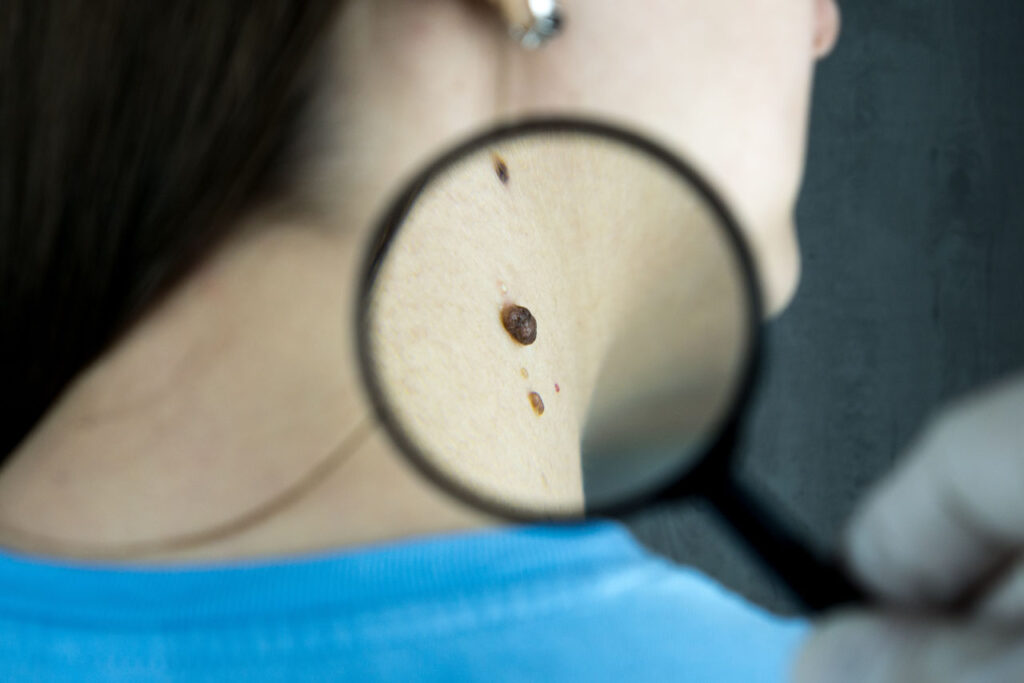
What are moles?
Moles represent a common type of skin growth, displaying a wide range of shapes and colors, including tan, brown, black, reddish-brown, pink, purple, or flesh-colored. They can be either flat or raised, and may be round or oval in appearance. While most moles are harmless and considered normal, some people may find them undesirable and choose to have them removed.
The occurrence of moles is linked to the clustering of melanocyte cells responsible for skin pigmentation, rather than spreading evenly throughout the skin. The precise triggers for this process are not fully understood, but factors such as genetics, hormones, sun exposure, and in rare cases, cancer, may contribute to their formation. To prevent and manage moles, it is essential to monitor them closely, limit sun exposure, and regularly apply SPF.
What are the different types of moles?
Moles can be classified into three main types, characterized by various shapes and colors:
- Common (or acquired) moles develop within the first 20 to 30 years of your life. These are mostly harmless. However, you should consult a dermatologist if you have a substantial number (50 or more) of acquired moles.
- Moles that you are born with are classified as congenital moles. These types of moles are usually raised with a round or oval shape. The vast majority of them are harmless, carrying a very low risk for skin cancer. However, large congenital moles may elevate the risk of developing skin cancers in the future, such as melanoma.
- Atypical moles (dysplastic nevus) are large moles with an irregular shape and unusual color. While it may resemble melanoma, they are not cancerous lesions. However, those that have atypical moles may be subject to carrying a higher risk of developing melanoma in the future.
What are my options for removing moles?
At Houston Laser Skin Center, we offer two primary procedures for mole removal, each depending on factors such as depth, location, color, skin type, and age.
- Shaving or Punching: This straightforward in-office procedure involves using local anesthesia and a blade (no stitches required) or a punch (requiring small stitches) to remove moles. Although a linear scar may be left behind, it will generally fade over time.
- Surgery: For larger, deeper moles, potentially cancerous ones, or those unresponsive to other treatments, surgical removal may be necessary. This procedure involves numbing the area with local anesthetic, excising the mole, and suturing the skin. While a linear scar may result, it will usually diminish with time.
Schedule an appointment today about your moles at our Northwest Harris County clinic
If you notice any changes in an existing mole or discover a new one on your body, it’s crucial to have it examined by Board Certified dermatologist Dr. Solomon Brickman.
To determine the most suitable approach for mole removal, schedule an appointment with Houston Laser Skin Center today. Dr. Brickman will discuss the available treatment options and guide you toward the best solution.
Our clinic is conveniently located on FM 1960 West near US 290, just minutes away from Cypress, Jersey Village, Tomball, Spring, and other Northwest Houston area communities.
